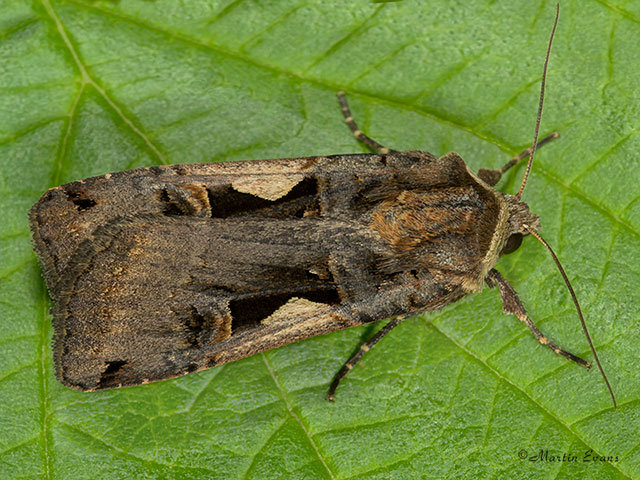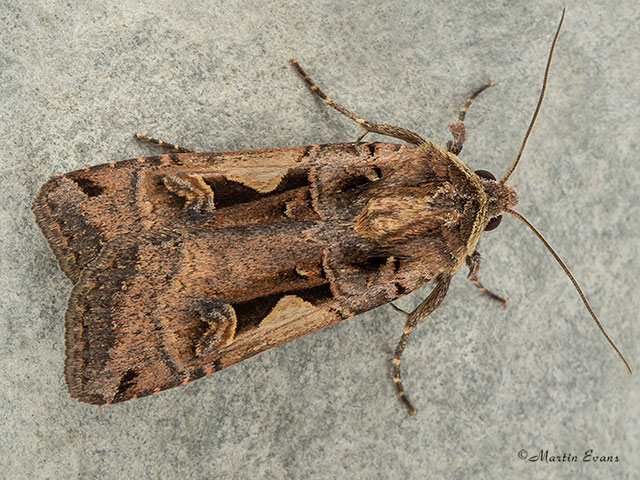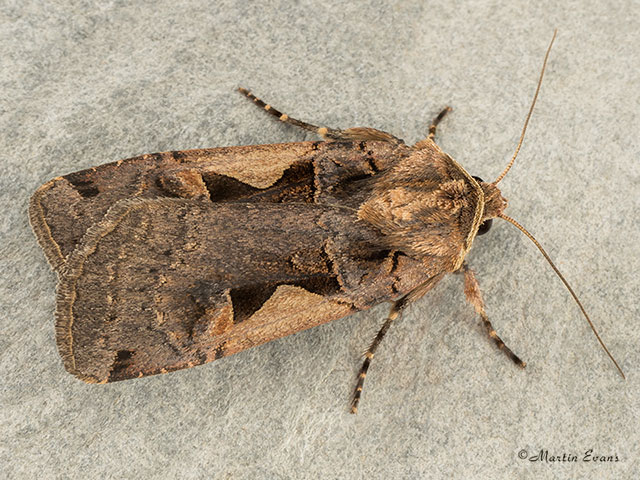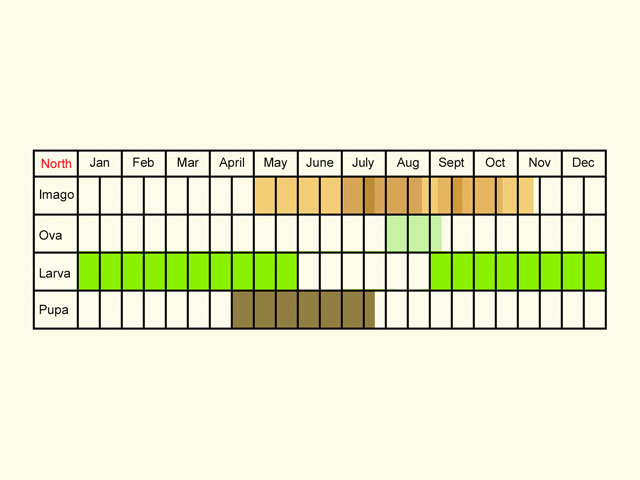Noctuidae
73.359 Setaceous Hebrew Character Xestia c-nigrum (Linnaeus, 1758)
Common
Similar species: The shape of the broadly flattened triangle in the black bar separates this moth from similar species.
Forewing: 14 to 19mm
Habitats: Most habits at low altitudes. Woodland, parkland, scrub, marshes, disused quarries, allotments and gardens.
Habits: The moth visits flowers after dark and is attracted to sugar and light.
Foodplant: The nocturnal larva feeds on a variety of herbaceous plants including plantains, Dandelion, willowherbs, burdocks, Common Nettle, White Dead-nettle, docks, Groundsel, Common Chickweed, then hides near the ground during the day. Pupation takes place in a loose cocoon under the soil.
On the European mainland it has also been recorded feeding on hawk-bits, hawks-beards, Horseshoe Vetch, clovers, Rosebay Willowherb, goosefoots, Knotgrass, False Oat-grass and Bracken.





